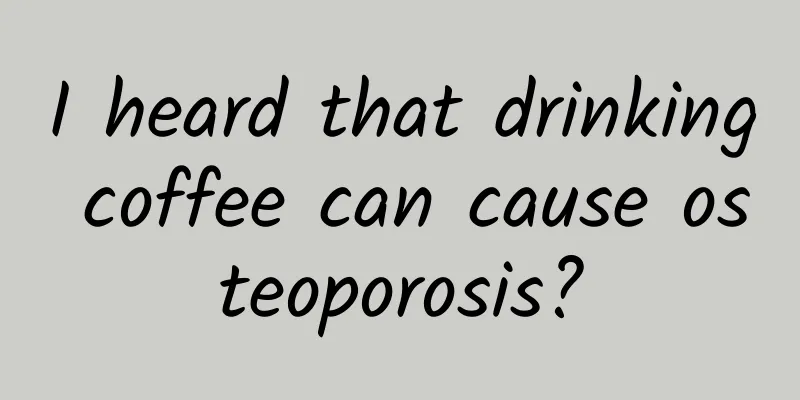Hitting the bull from a distance - Learn about extracorporeal shock wave therapy for urinary tract stones

|
Author: Ye Zixing Peking Union Medical College Hospital Reviewer: Xiao He, Chief Physician, Peking Union Medical College Hospital Urinary stones, in layman's terms, are small stones that exist in the urinary tract (such as the kidneys, ureters, bladder, and urethra). In my country, the prevalence of urinary stones is as high as 5%, and even 10% in some areas in the south. There are more than 2 million newly diagnosed stone patients in my country every year, of which about 1/4 require hospitalization. It can be seen that stones are all around us. Figure 1 Copyright image, no permission to reprint Although some stones can be discharged by themselves through drinking more water, exercising, using stone-discharging and stone-dissolving drugs, some stones still need to be treated by special methods, such as extracorporeal shock wave lithotripsy or even surgical lithotripsy. Today, let's take a look at extracorporeal shock wave lithotripsy. Extracorporeal shock wave lithotripsy is a non-invasive treatment method. The doctor will place a transmitter outside the patient's body. This device will emit high-energy sound waves, which will pass through the body's skin, fat, muscle, bone, perirenal fat, and renal parenchyma, and eventually focus on the stones in the kidneys or ureters and break them up. After the stones become small particles, they will pass through the ureters, bladder, and urethra and eventually be excreted from the body. This is currently the more commonly used lithotripsy method. Figure 2 Copyright image, no permission to reprint In fact, people have discovered that sound waves can be focused a long time ago. In 1969, Dornier Laboratory began to study the impact of shock waves on human tissues and found that shock waves generated underwater can pass through living tissues (except the lungs) without causing any noticeable damage to the tissues, while those fragile materials in the path of the shock waves were shattered. In 1982, the first extracorporeal shock wave lithotripter, the Dornier lithotripter, was finally launched. Currently, about 1 million stone patients receive extracorporeal shock wave lithotripsy treatment every year. Extracorporeal shock wave lithotripsy is less traumatic and has a relatively satisfactory lithotripsy effect. Therefore, it can be used to treat kidney or ureteral stones with a diameter of less than 2 cm. For kidney or ureteral stones with a diameter of less than 1 cm, extracorporeal shock wave is one of the preferred lithotripsy methods. Figure 3 Copyright image, no permission to reprint There are many factors that affect the effect of lithotripsy. First, the stone is too large. Because the efficiency of extracorporeal shock wave lithotripsy is relatively low, the larger the stone, the lower the clearance rate will be, and the more likely it is that the stone will remain. Second, the stone is too hard or too soft. This type of stone usually includes hard cystine stones, calcium hydrogen phosphate stones, calcium oxalate monohydrate stones, and too soft organic-rich matrix stones, which are often difficult to crush. Third, there are anatomical abnormalities of the kidney or ureter. Because the stones crushed by shock waves need to be excreted by the body itself, if there are factors that affect the excretion of stones, extracorporeal shock wave lithotripsy is not suitable. Common factors include stones located in the lower calyx of the kidney, a smaller renal pelvic funnel angle, stenosis of the ureteropelvic junction, and ureteral stenosis. In addition, the farther the skin is from the stone (that is, the more obese the person is), the lower the stone clearance rate. Fourth, the stone is difficult to locate. Due to the influence of respiratory movement and stone displacement during treatment, X-rays are usually needed to continuously locate the stones during extracorporeal lithotripsy so that the shock wave can be aimed more accurately. However, uric acid stones cannot be displayed by X-rays, and small stones are even more difficult to aim at, so it is difficult to perform extracorporeal lithotripsy on such stones. Of course, although the current extracorporeal lithotripsy that uses ultrasound for positioning can solve this problem, it puts forward new requirements for the lithotripsy and operators. The doctor will decide whether extracorporeal shock wave lithotripsy can be used based on the specific situation of each patient. Although theoretically, shock waves have little effect on the tissues they pass through and can be focused on the stones, they are still affected by factors such as focusing accuracy and the patient's respiratory movement, causing a certain degree of damage to the kidneys and ureters. A small number of patients will experience hematuria, arrhythmias, infections, and renal colic and residual stones related to stone excretion. Pregnant women and patients with coagulation disorders or aneurysms near the stones should not use extracorporeal shock wave lithotripsy. Therefore, even if extracorporeal lithotripsy seems non-invasive, it is up to the doctor to decide whether it can be performed. In general, due to its safety and effectiveness, extracorporeal shock wave lithotripsy is currently a "weapon" for treating kidney or ureteral stones less than 2 cm. However, the effect of extracorporeal lithotripsy is affected by factors such as the texture and size of the stone, the difficulty of stone expulsion and positioning, and the continuous development of ureteroscopy and percutaneous nephrolithotomy technology. Doctors still need to weigh the pros and cons and risks and develop the most suitable stone treatment plan for patients. References Huang Jian, Zhang Xu. Chinese Guidelines for Diagnosis and Treatment of Urology and Andrology Diseases (2022 Edition)[M]. Beijing: Science Press, 2022. |
<<: Human body 24-hour rhythm table, a healthier life starts with understanding yourself! (I)
Recommend
Anti-depression exercise ranking: No. 1 is not running or walking, but…
Have you ever noticed that after a good run or ra...
Treatment of moderate cervical erosion vaginitis
Moderate cervical erosion vaginitis is a very sen...
Will my breasts get smaller after breastfeeding ends?
During the lactation period, women's breasts ...
How long does it take to see the fetal heartbeat?
Some female friends are very curious about what t...
Walking reduces heart failure risk in older women
Walking is a simple and effective form of exercis...
What are the effects of square slimming aerobics?
With the improvement of people's living stand...
Vaginal pain during pregnancy
During pregnancy, many mothers not only suffer fr...
At what age do women stop menstruating?
Women will have their first menstruation when the...
Sensitive signs of successful conception
A woman's body will undergo significant chang...
Is it true that marine fish can be eaten raw because they have no parasites?
The discovery of fire changed human ancestors fro...
What to do if you have abdominal pain after menstruation?
In our daily lives, we often encounter female fri...
What is the cause of a woman's navel inflammation?
Women usually pay more attention to their body ca...
Tips for getting pregnant quickly
We all know that women's physiques will be mo...
What is the best sleeping position during menstruation?
Women have had this experience before: sanitary n...
Nipple pain
The breast is a very special part of a woman. Whe...









